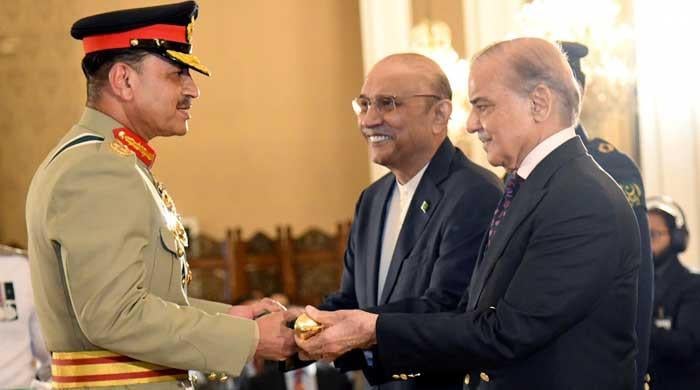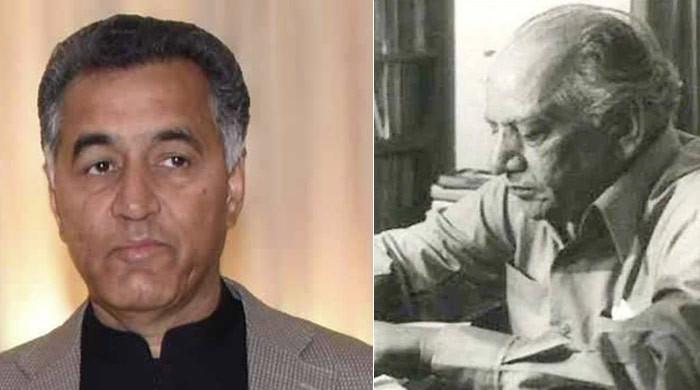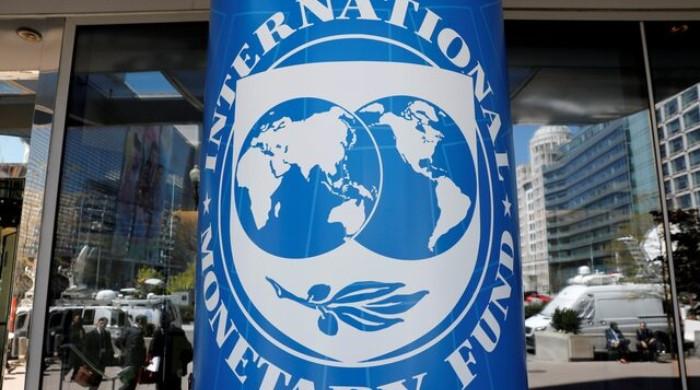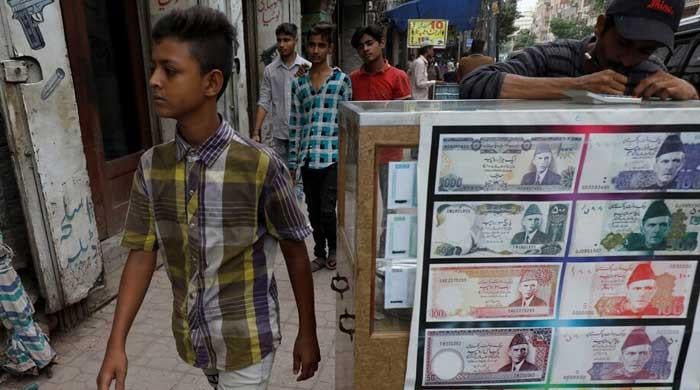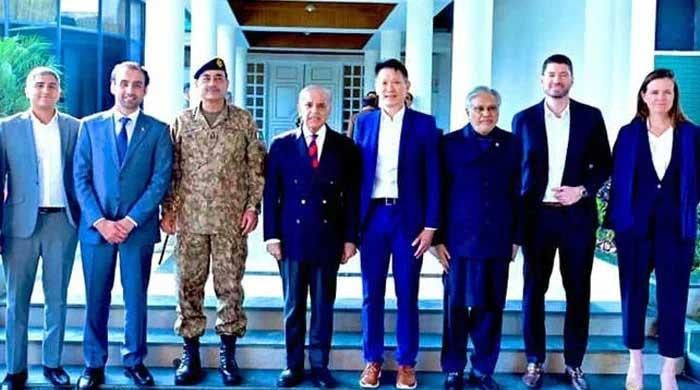The paradox of doom and boom mongers
The gloomy projections by certain technocratic and econometric quarters were so alarming that COAS Gen Bajwa was dragged into the controversy
October 19, 2017
The World Bank had to go back on the fuel it had added to the doomsday scenario, being portrayed by technocrats-in-shadows, by admitting that it had wrongly added $13 billion of portfolio investment as part of the repayment of external obligations that actually stand at $17 billion and not $31 billion. This still keeps the balance of payments (BoP) and reserves under pressure of a dependent economy of a client national-security state.
The gloomy projections by certain technocratic and econometric quarters were so alarming that COAS Gen Bajwa was dragged into the controversy in the company of economic doomsday projectors at an ISPR-FPCCI joint seminar in Karachi at a time when the annual meetings of the World Bank and the International Monetary Fund were in progress in Washington.
What made things awkward were the unwarranted polemics that took place between the DG ISPR and Interior Minister Ahsan Iqbal. The minister had to tell the DG that the delicate matters of fiscal and financial calculations were not in the former’s purview; the minister also had to face embarrassment before donors. Tragically, ‘civilian supremacy’, thankfully reassured by the DG ISPR, had to eventually retreat. The stop-gap prime minister had to concede the right of the COAS to express his concerns about the economy in public.
Finally, no other than beleaguered Finance Minister Ishaq Dar had to come settle the dust with his 5.3 percent GDP growth mantra, the highest in the last decade, to dispel the somewhat exaggerated predictions about rising fiscal and external account deficits. Paradoxically, Dar was accompanied by Special Assistant to PM on Revenues Haroon Akhtar. Akhtar’s brother’s Institute for Policy Reforms’ ‘Review of the Economy 2016-17’ and former finance minister Dr Hafiz Pasha’s pessimistic gloom and doom projections had initially fuelled the panic.
It is a coincidence that Dr Pasha’s wife Dr Khalida Ghaus is the finance minister in the Shahbaz Sharif government and is also one of the members of the Board of Directors of IPR. However, Dr Pasha along with the very honest economist, Shahid Kardar, had in a joint article in Dawn proposed some fiscal and structural remedies regarding how to increase exports and curtail some burden of imports to balance the books, something our accountant finance minister is good at. It should, however, be admitted that both IPR and Dr Pasha had correctly shown the current account deficit at 4 percent of GDP, or $12.1 billion for FY2016-17, despite expressing their serious doubts about the authenticity of the calculations of the Pakistan Bureau of Statistics.
In his remarkable piece, ‘The sky is falling’, Dr Asad Zaman, vice-chancellor of the Pakistan Institute of Development Economics (PIDE), has rightly cautioned against the mindset of ‘the sky is falling’ while exaggerating the ‘sky is the limit’ optimistic scenario on the basis of a two-gap growth model for development that he has enthusiastically weaved around the Sharif’s brick and mortar model of progress. However, neo-liberal economists, who now influence all the stakeholders from among the dominant elites in Pakistan, must ponder over what Dr Zaman aptly says about the ‘Washington Consensus’ that helped a Chicago-type market economics model take over the world.
Zaman says: “The Chicago model has taken a beating in the past two decades, when capital flow liberalization led to the East Asian Crisis, and privatization everywhere have [sic] led to higher prices at lower quality and increased corporate profits, accompanied by unprecedented inequality in income and assets leading to increasing misery of the bottom 90 percent. Even John Williamson, the inventor of [the] Washington Consensus, and the World Bank, which implemented it across the globe, have [sic] admitted the failure of these market policies to produce development. The central idea of “free market fundamentalism” that if we just stand aside and let the market do its magic, everything will turn out wonderfully, has been thoroughly refuted by growth experiences across the globe”.
In a broadly similar framework, economist Sakib Sherani has dwelt upon “a recursive history of economic boom and bust – and (about) lessons unlearnt”, in his article, ‘Crises past and present’ in Dawn. He has summarized our “frequent tryst with economic crises” as: “Past growth episodes have been short-lived, lasting an average of four year – unlike China, India, Vietnam or a clutch of high performing developing economies, where the phase of economic expansion has lasted, virtually uninterrupted, for decades”. But, in our case, he rightly says: “Under all manner of government(s) – from technocrats to bureaucrats, military dictators and politicians – a policy framework has been constructed that encouraged import-based consumption subsidized by the country’s export via the over-valued exchange rate”.
It is not economics that has been repeatedly refusing the panacea of structural reforms essentially in the fiscal sphere signed by all successive governments, but the political economy of an exclusionary model of growth that suited the country’s elitist-militarist in. The question is not that you borrow in a low-income country, but where you spend the borrowed money – on parasitic consumption or productive use? Nor is the question over external borrowing or foreign or external debt that a dependent economy is bound to resort to – to meet the luxurious lifestyle of the ruling civil and military elites – or over-investment on a self-sustaining model of growth.
An unsustainable and exclusionary model of accumulation and ‘development of underdevelopment’ is bound to fail – as it has shown us at the end of every IMF-World Bank bailout to sustain dependency and clientage. Predominantly indirect taxes and workers’ remittances have kept us float above the stormy waters in an economy where traders and the landed elite don’t pay their taxes while demanding all kinds of concessions in pursuit of rents.
Above all, barring a few exceptions, I don’t see anybody raising fundamental questions about how and where we spend taxpayers’ money. Gen Bajwa has surprisingly tried to broaden the spectrum of security by including human, social and economic security in Pakistan’s traditionally militaristic paradigm of security. But there was no one in the Karachi seminar to remind him of the high cost of security to all other facets of social and human security and a fragile economy.
The Federal Net Revenues are consumed by two Ds – debt-servicing and defence. The Public Sector Development Programme is left at the mercy of the availability of domestic or external borrowings. Despite all odds, we spend 3.6 percent of our GDP on defence as compared to 3.5 percent spending by the US, 2.1 percent by China and 2.5 percent by India.
There is no way to get out of this quagmire of a dependent, low-growth, low-saving, low-investment, elitist, consumerist (consumption is now 94 percent of our GDP) and militarist model that keeps our motherland in a state of a perpetual crisis of dependency, insolvency and survival.
We need to restructure our dominant elitist power-structures and take an inclusive and sustainable productive model that is of the people, by the people and for the people. But who will do all this after the demise of democratic and peoples’ movements, the rise of the Extreme Right and the threat of Trump’s militaristic nationalism?
The writer is a senior journalist.
Email: [email protected]
Twitter: @ImtiazAlamSAFMA
Originally published in The News




